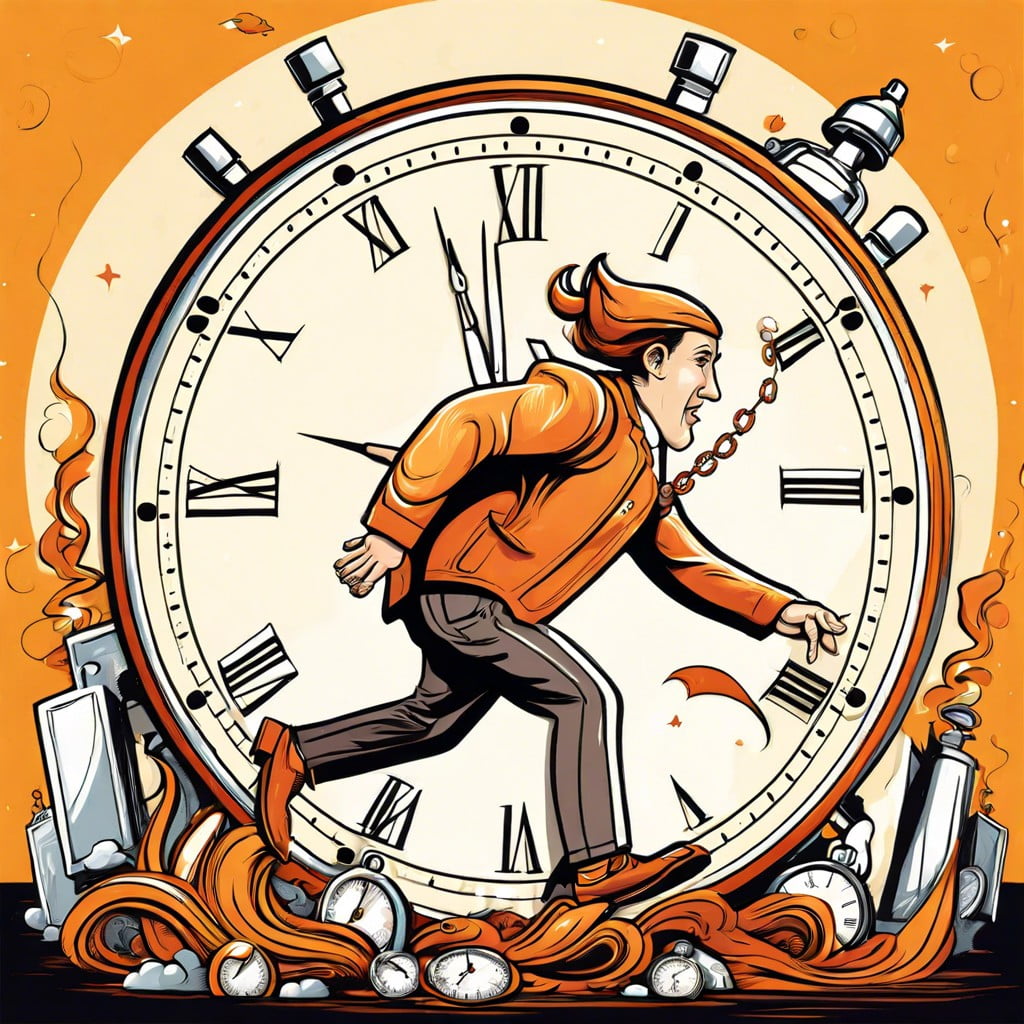Ready to understand why being productive doesn’t necessarily mean more hours on the clock, but more value in your time?
Key takeaways:
- Quantity vs. Quality: Elapsed time focuses on the clock, while productive time focuses on action-packed moments.
- Focus and Efficiency: Productive time thrives with laser focus and fewer distractions.
- Distractions Matter: Elapsed time doesn’t care about distractions, productive time does.
- Increased Benefits: More productive time leads to improved efficiency, financial performance, employee satisfaction, and faster project completion.
- Lean Tools: Use 5S, Kanban, Value Stream Mapping, and Kaizen to maximize productive time.
Definitions

Elapsed time and productive time are two sides of the same coin but surprisingly different in how they impact your day. Let’s break them down.
Picture a stopwatch. Elapsed time is simply the amount of time that passes from start to finish, like the hours ticking away in a workday. It’s the clock-watching, procrastination-dancing, lunch-breaking total time.
Now, productive time is the golden nugget within those hours. It’s the actual time spent focused and working effectively on tasks that matter. It’s the “get-stuff-done” mode when you’re in the zone, completing tasks, and feeling like a rockstar.
- To put it in perspective:
- Elapsed time is the marathon, but productive time is the sprinting bursts where you actually cover ground.
- Elapsed time includes the coffee runs, Instagram scrolls, and those deep dives into Wikipedia rabbit holes.
- Productive time is the superhero mode when you’re saving the day, task by task.
Understanding these concepts helps in transforming those endless hours into effective power-packed minutes.
Key Differences Between Elapsed Time and Productive Time
Elapsed time is like that friend who just hangs out, chillin’, while productive time is the overachiever getting things done. They’re both important, but they serve different roles.
- Elapsed time measures total time taken from start to finish. Imagine hitting play on a movie and watching the entire thing, including bathroom breaks, popcorn mishaps, and those Netflix “are you still watching?” moments.
- Productive time, on the other hand, focuses on moments when actual work gets done, like scenes from that movie where the hero’s kicking butt and taking names.
- Key points to understand:
- Quantity vs. Quality: Elapsed time is all about the clock ticking away, while productive time zeroes in on the action-packed sequences.
- Focus and Efficiency: Productive time thrives when you’re laser-focused. Less “squirrel!” moments, more “mission accomplished” vibes.
- Distractions Matter: Elapsed time doesn’t care if you spent two hours on TikTok. Productive time is more like your boss – it definitely does care.
Understand these, and you’re well on your way to mastering the art of turning minutes into meaningful moments.
Benefits (Source: Competing Against Time)
Increased productive time leads to exponential benefits. First, efficiency skyrockets. Like getting ready in half the time because you finally organized that chaotic sock drawer.
Companies see improved financial performance. Revenue climbs when operations are streamlined. Nobody likes watching money take a leisurely stroll out the door.
Employee satisfaction also gets a boost. People love working smarter, not harder. Less stress, more high-fives.
Finally, faster project completion. Imagine getting that project done so fast that the boss thinks you’re twin siblings working in shifts.
Lean Tools to Maximize Productive Time
Lean tools are your productivity power-ups. Imagine if your workspace was a video game; you’d want all the power-ups to speed through levels, right?
First up is 5S. It’s like the Marie Kondo of business strategies. Sort, Set in order, Shine, Standardize, and Sustain. Just remember: a clean workspace is a happy workspace.
Then, there’s Kanban. Picture a giant to-do list that keeps everyone on the same page. Tasks flow smoothly from start to finish, like a carefully choreographed dance number.
Don’t forget Value Stream Mapping. You get to be a treasure hunter, mapping out your processes to find hidden inefficiencies. A little gold here, a little treasure chest of productivity there.
Finally, meet Kaizen. It’s all about continuous improvement. Think of it as the friend who always has the best advice for minor tweaks that lead to major payoffs.
Use these tools and you’ll be zipping through your to-do list faster than a caffeinated squirrel. Get ready to turn productive time into a superpower!
Example Scenarios for Better Understanding
Imagine you’re a chef preparing lunch. Elapsed time starts when you arrive at the kitchen and ends when the meal is served. However, within this span, you have moments where you’re chopping, stirring, and cooking – that’s your productive time. A lot of it is spent waiting for water to boil or preheating the oven, not very productive, right?
Think about a student studying for an exam. Elapsed time might be three hours in the library. Within this, productive time is when actually reading the chapters, making notes, or quizzing themselves. If they spend too much time choosing the perfect highlighter, elapsed time grows while productive time shrinks.
Apply this to a typical office scenario. An employee has an 8-hour workday. Elapsed time includes coffee breaks, small talk, and checking personal emails. Productive time is when working on reports, attending meaningful meetings, or designing projects. Maximizing productive time within the same elapsed period leads to higher efficiency.
Envision a sports practice. The coach schedules a 2-hour session. Elapsed time covers the full span from start to finish. Within this, productive time is spent running drills, practicing plays, and giving feedback. Waiting for turn or fetching water reduces overall productivity.